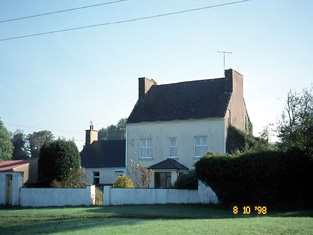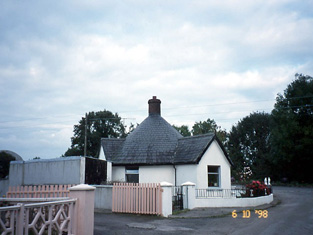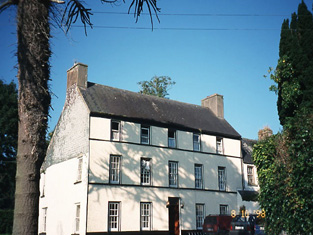Riverville (Currans)
Houses within 5km of this house
Displaying 9 houses.
Houses within 5km of Riverville (Currans)
Displaying 9 houses.
| House name | Description | |
|---|---|---|
| Knockaneacoolteen House | William Curtayne was leasing this house from Lord Kenmare’s estate at the time of Griffith’s Valuation, when it was valued at £4 10s and stood on over 300 acres. Bary indicates that the house, possibly built in the 18th century, is still extant. | |
| Molahiffe House | Eliza Griffin was the lessor of this property at the time of Griffith's Valuation, when it was valued at almost £6 and vacant. In 1837 Lewis mentions "Boucheens" as the residence of Montague Griffin. Bary states that this is a very old house and is widely believed to be one of the earliest homes of the Browne family, later Lords Kenmare. It is still extant and occupied. |

|
| Cloonlara | Christopher Gallway was leasing this property to William Hickson at the time of Griffith's Valuation, when it was valued at £7 5s. A farm is still extant at the site. | |
| Corbally House (Magunihy) | The Kenmare estate was the lessor of Corbally House at the time of Griffith's Valuation, when it was valued at £11 5s. Bary states that this farm was originally held by the O'Connor, probably of nearby Fieries Castle. Later a Fr. Dunne built Corbally House as a presbytery near the old Catholic Church. The property is still extant and occupied. | |
| Inchinveema | Christopher Gallway was leasing this property to Daniel Sullivan at the time of Griffith's Valuation, when it was valued at £6. Buildings are still extant at the site. | |
| Dicksgrove | Richard Meredith was the owner of this property at the time of Griffith's Valuation, when it was valued at £30 15s. In 1786 Wilson notes Dick's Grove as the seat of Mr. Meredith. Both Leet in 1814, and Lewis, in 1837, refer to it as the seat of the Meredith family. In 1906 it was still owned by the Merediths and valued at £31 5s. Bary writes that this land, granted to the Herberts in the seventeenth century, passed to the Merediths through marriage some time later. The house was built sometime in the 1730s and remained in the Meredith family for 200 years, though Lyons notes that it was offered for sale but later withdrawn in 1855. The sale notice includes a lithograph of the house The estate was sold to the tenants in the 1930s. Dicksgrove was completely demolished but some of the stable buildings and gate lodges remain. |

|
| Currans House | The Ordnance Survey Name Books record Currans House as in a "decayed condition" in 1840. It was allegedly built c.1700. Francis Peet had resided there until c.1829. At the time of Griffith's Valuation, it was in the possession of Charles Daly, unoccupied and valued at £3. It is labelled Currans House on both the 1st and 25-inch edition Ordnance Survey maps. A house is still extant at the site. | |
| Roxborough (Molahiffe) | Wilson, writing in 1786, refers to Roxborough as the seat of Francis Chute. At the time of Griffith's Valuation, the townland was part of the estate of Reverend George Chute and Roxborough House was occupied by a Mrs Kenny and valued at almost £7. It is still extant and used as a farmhouse. | |
| Molahiffe Castle | At the time of Griffith's Valuation, Maurice de Coursey was leasing a property in the townland of Castlefarm from the Kenmare estate which had a valuation of almost £6. It is likely to have been the house labelled on both the 1st and later 25-inch edition Ordnance Survey Maps as Molahiffe Castle. The National Inventory of Architectural Heritage states that this house was built in the mid-eighteenth century. In 1943 the Irish Tourist Association Survey highlights the close links between Molahiffe and the Browne family, who, it says, resided in the area until the building of the first Killarney House. The remains of the original Molahiffe castle are located a short distance from the present house, now known as Castlefarm House. |

|

